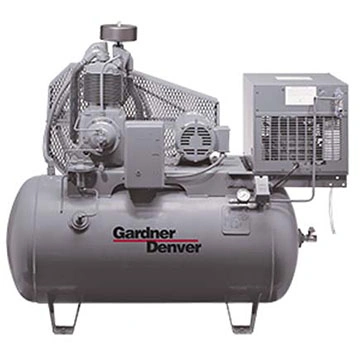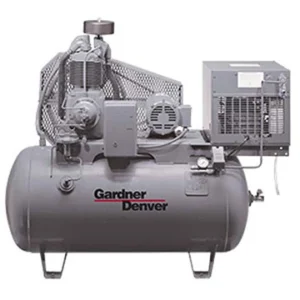
 At Pye-Barker Engineered Solutions, we know air compressors inside and out. As a trusted industrial equipment supplier, service provider, and engineering firm, we work with businesses across Florida and Georgia to find the best compressed air systems for their operations. Whether you’re in manufacturing, automotive, food processing, or any other industry that depends on compressed air, choosing the right type of air compressor is essential to efficiency and performance. Let’s take a closer look at the different types of air compressors and how they fit into various applications.
At Pye-Barker Engineered Solutions, we know air compressors inside and out. As a trusted industrial equipment supplier, service provider, and engineering firm, we work with businesses across Florida and Georgia to find the best compressed air systems for their operations. Whether you’re in manufacturing, automotive, food processing, or any other industry that depends on compressed air, choosing the right type of air compressor is essential to efficiency and performance. Let’s take a closer look at the different types of air compressors and how they fit into various applications.
Air compressors take in ambient air, pressurize it, and store it for use in powering pneumatic tools, machinery, and other industrial applications. The way air is compressed varies between different types of compressors, with some using positive displacement and others relying on dynamic compression. Selecting the right compressor depends on factors like required air pressure, duty cycle, energy efficiency, and maintenance needs.
Reciprocating air compressors are among the most common and widely used in small and mid-sized operations. They work by using a piston inside a cylinder to compress air and store it in a tank.
Key Features:
For businesses in Florida and Georgia that need a cost-effective, high-pressure air solution, a reciprocating compressor may be a great choice.
When a continuous supply of compressed air is required, rotary screw air compressors are the go-to option. These compressors use two meshing helical screws to compress air efficiently and consistently.
Why Choose a Rotary Screw Compressor?
Pye-Barker Engineered Solutions supplies and services high-performance rotary screw compressors, helping businesses in Florida and Georgia maximize productivity while reducing downtime.
Centrifugal compressors are designed for large-scale, high-demand applications. These units use dynamic compression, where air is accelerated using a high-speed impeller before being slowed down to increase pressure.
Ideal Applications:
Centrifugal compressors have minimal moving parts, which translates to lower maintenance requirements. However, they require higher initial investment and a stable environment to operate efficiently.
For industries where ultra-clean, oil-free air is critical, scroll air compressors provide an excellent solution. These compressors use two spiral-shaped scrolls—one stationary and one moving—to compress air in a smooth, continuous process.
Key Benefits:
If your business in Florida or Georgia requires an oil-free air solution, Pye-Barker Engineered Solutions can help you find the perfect scroll compressor to meet your needs.
Some industries require compressed air that is entirely free of oil contamination, while others can operate efficiently with oil-lubricated systems. Understanding the difference can help you make an informed decision.
When selecting an air compressor, consider these factors:
At Pye-Barker Engineered Solutions, we provide expert guidance to help businesses in Florida and Georgia select, install, and maintain the right air compressor for their needs.
In addition to supplying top-tier compressors, we offer full-service solutions to keep your systems running efficiently:
The right air compressor can significantly impact your operational efficiency, productivity, and bottom line. Whether you need a robust rotary screw compressor for your manufacturing facility or an oil-free scroll compressor for precision applications, Pye-Barker Engineered Solutions has the expertise to guide you every step of the way.
If you’re looking for a reliable air compressor solution in Florida or Georgia, contact us today to discuss your needs. Our team is ready to provide expert recommendations and top-quality equipment to keep your business running at full capacity.


